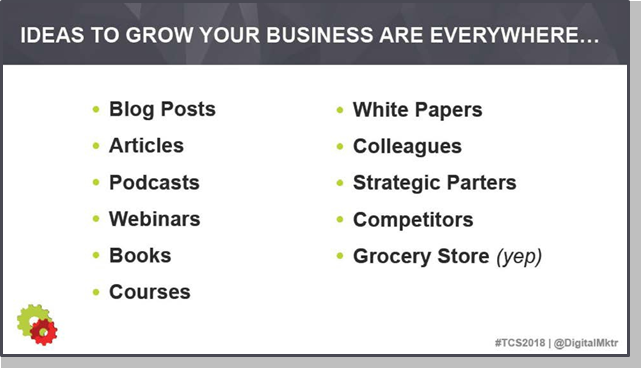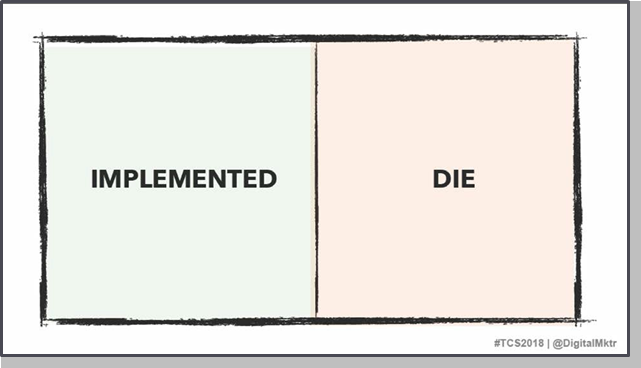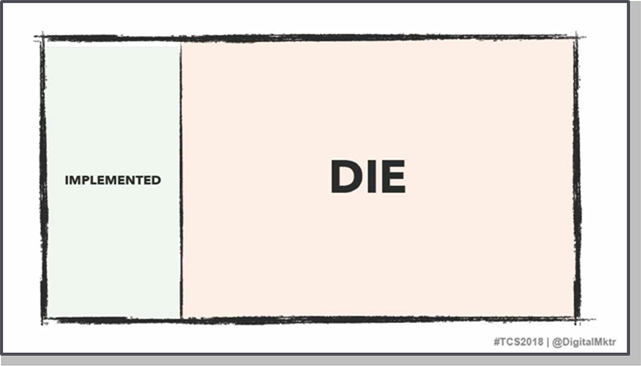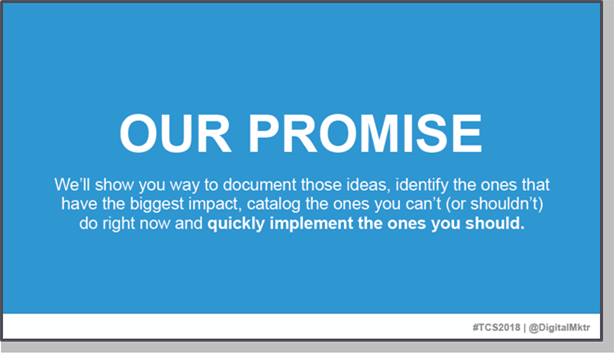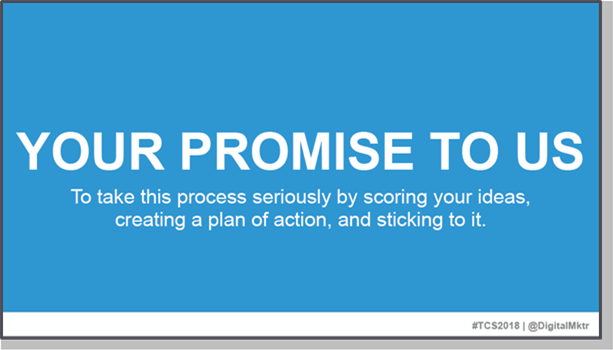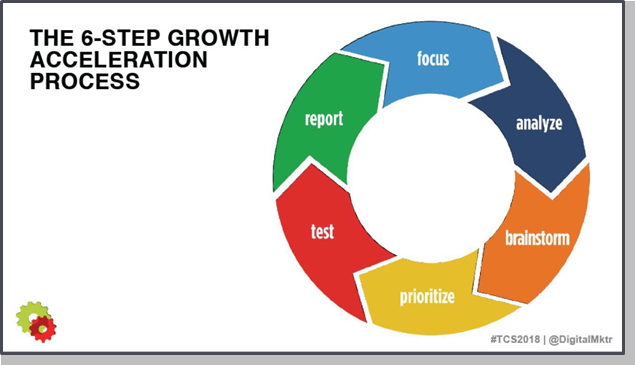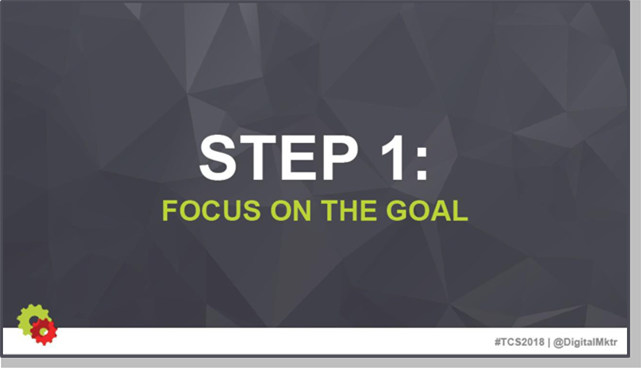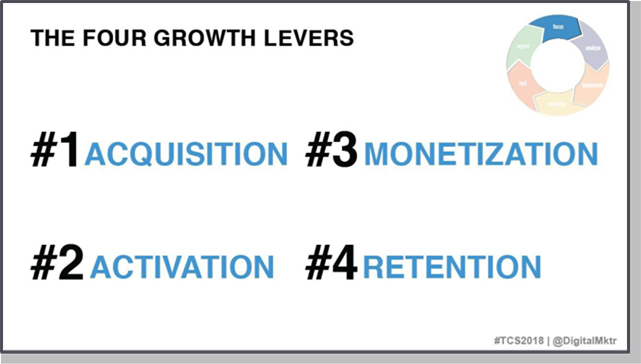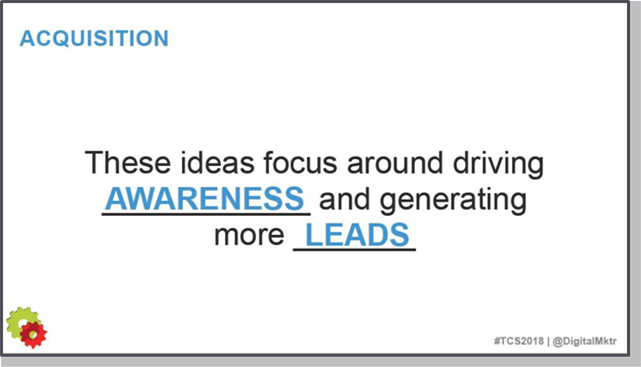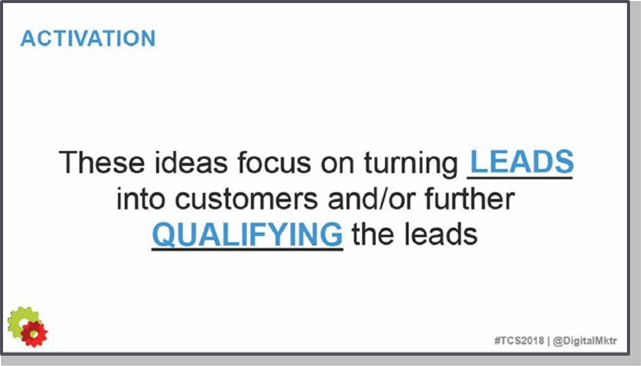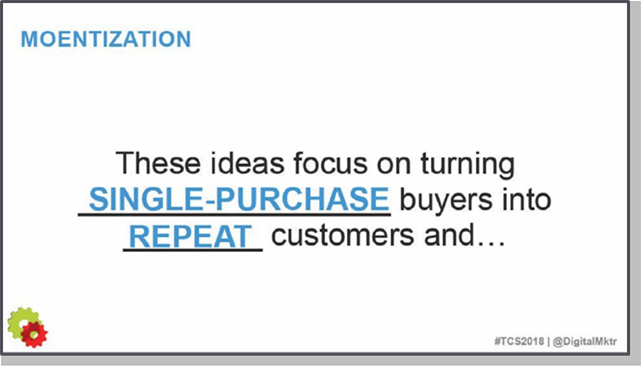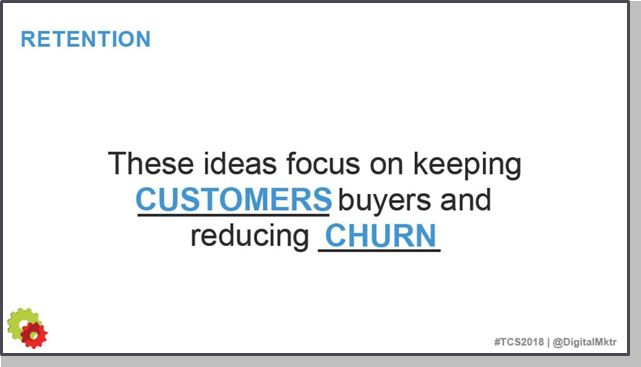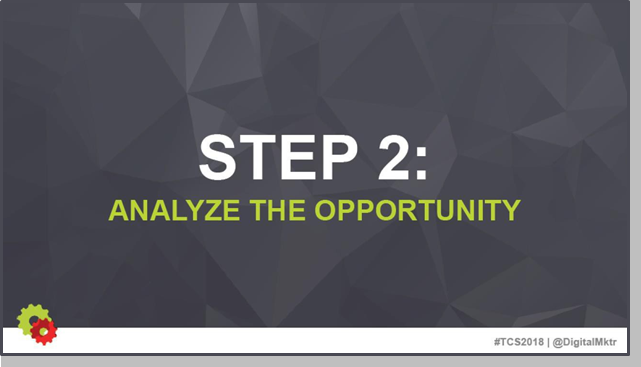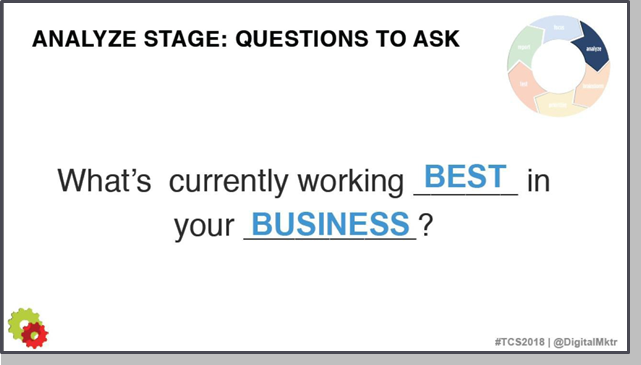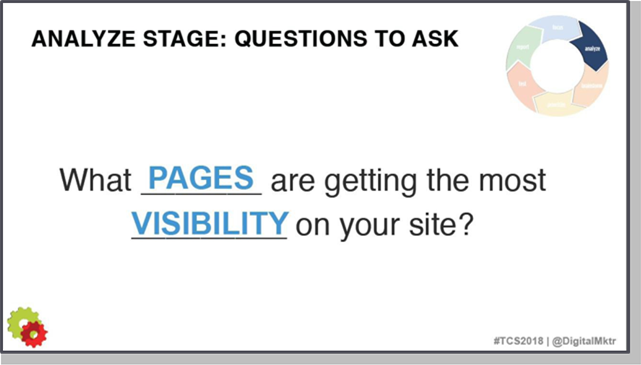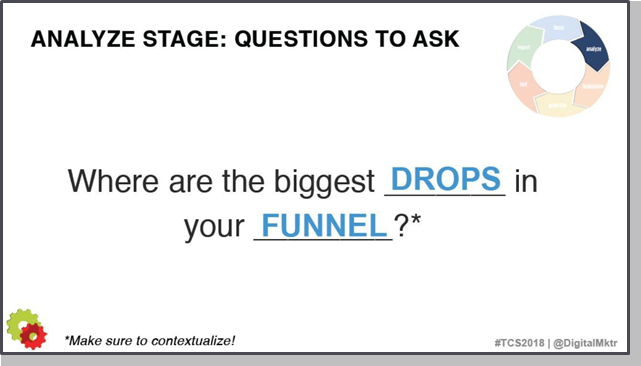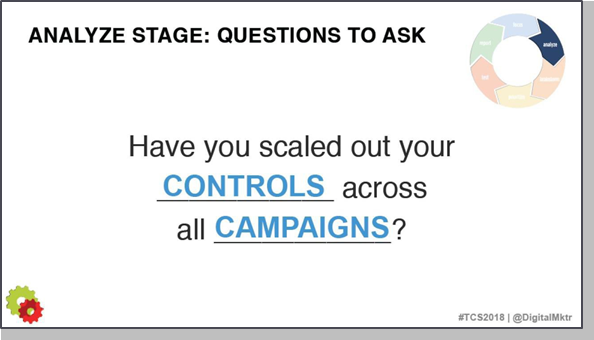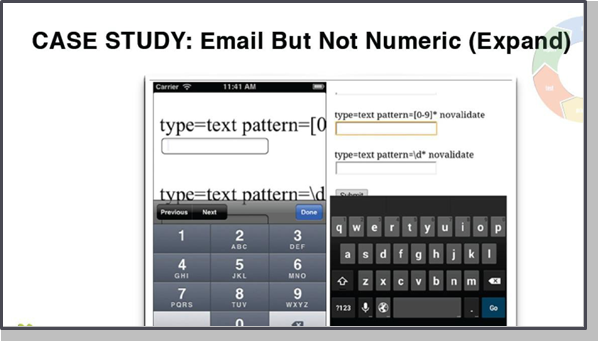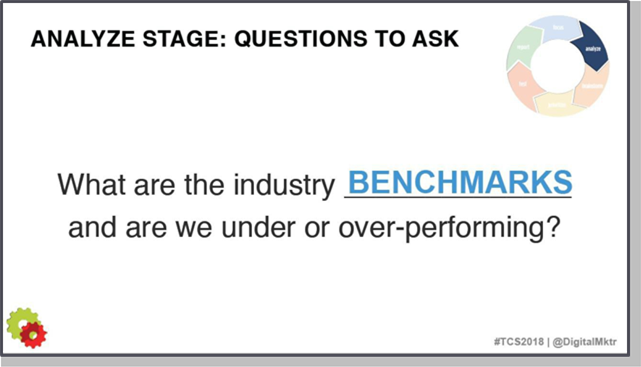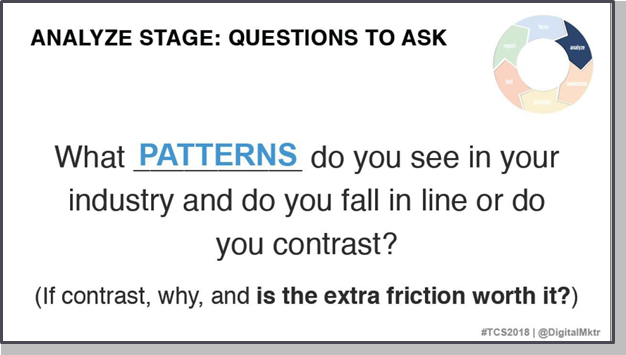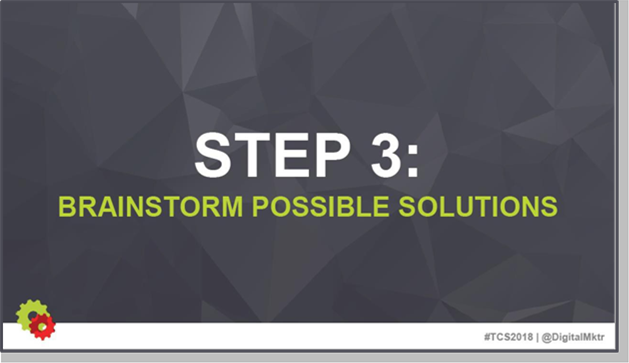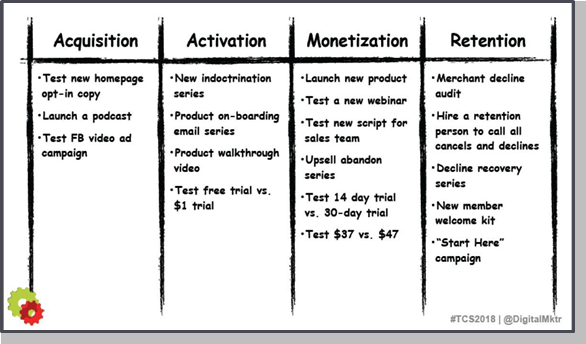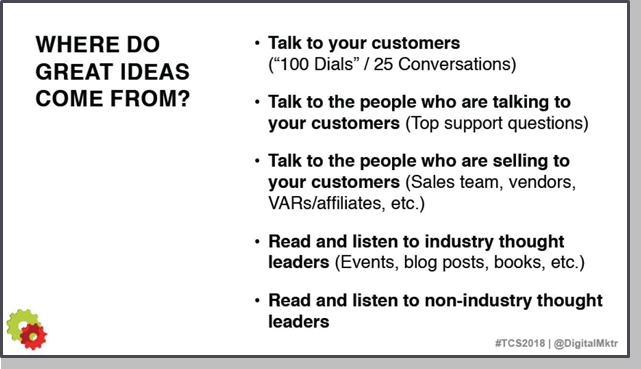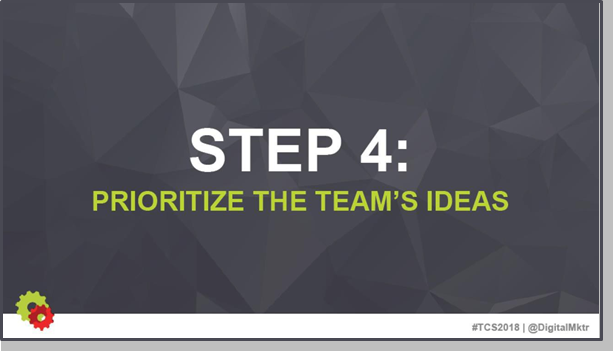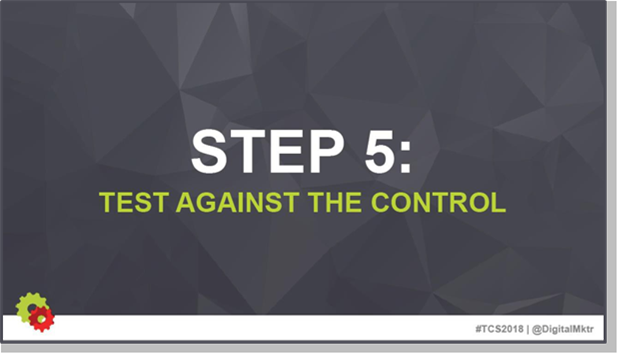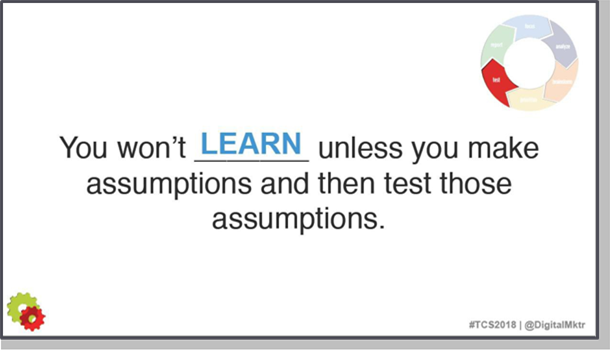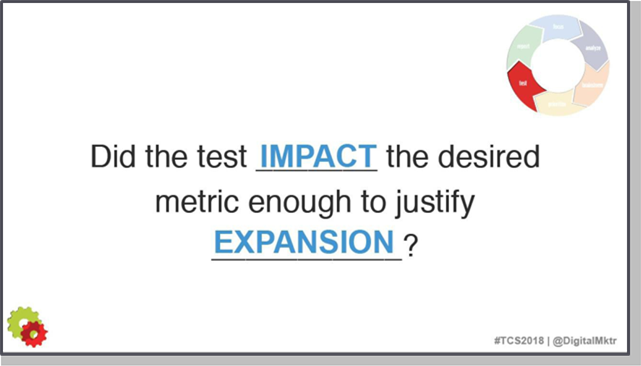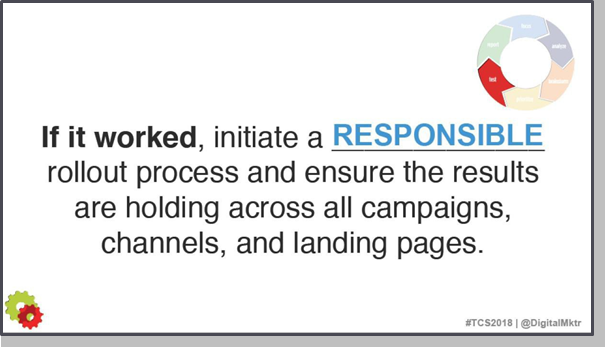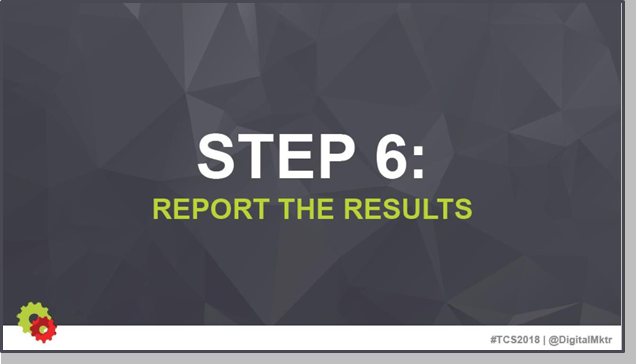Justin Rondeau
Justin Rondeau is the Director of Marketing at DigitalMarketer and leads product innovation at TruConversion. He specializes in optimizing marketing campaigns and digital experiences to help grow businesses and is also interested in user experience research, karaoke, split testing, mustaches, and the Boston Bruins.
Richard Lindner
Richard Lindner is the President and Co-Founder of DigitalMarketer, the industry leader in global digital marketing education. While running a global team of more than 50 professionals worldwide, Richard also is a sought after executive leadership expert, working with some of the world’s most exciting brands like Uber, Harper Collins, Infusionsoft, Maropost and Ethiad Airlines to name a few.
Here’s a fact for you: Failure or the lack of growth in any business isn’t caused by bad ideas. In fact, quite the opposite is true. Failure happens when you try to implement too many good ideas.
Shiny Object Syndrome
At Traffic and Conversion Summit, you got 40 to 80 new ideas, and you’re probably the most excited about the last one you heard. The last one you heard was the one that you can’t wait to implement. Or was it the one before that. No, it was the one on day one. Like the second one on day one that was really going to… Yeah, that one.
Shiny object syndrome is what we all get. We don’t just get it when we go to events. It happens every day. Every day you’re flooded with new ideas from blog posts, from articles, from podcasts, from webinars, from books, from courses, from white papers, colleagues give you ideas, strategic partners do really cool things.
You see your competitor doing something and you’re like, “That’s what I need to do to increase my traffic,” or “That’s what I need to do. I need to do a webinar now,” or the grocery store. Yup, good ideas happen at the grocery store. In fact, I get a lot of copy ideas and headline ideas when I’m standing at the grocery store. I try not to just whole heartedly steal them, but sometimes I do.
Every day, you’re flooded with new ideas and new strategies to grow your business. I love this quote by Harvey Firestone: “Capital isn’t important in business. Experience isn’t that important in business. You can get both of these things, but what is important is ideas.” And I couldn’t agree more.
But there’s one of two things that happen to all ideas, good or bad.
- They get implemented.
- They die.
Do you think they are 50/50 like this?
No, it looks a little bit something more like this
So, if this is true of the 80 or so ideas you’ve got at Traffic and Conversion Summit from people who actually do this stuff that you know will work your business and they gave you a blueprint to do it, most of those ideas will die. Tough message.
But, don’t worry. You need an objective process for sorting ideas so the good ones rise to the top and the not so good ones get cataloged for later.
But wait, why would we save the bad ideas for later? Why don’t you throw those away? Well, I love this quote as well. “The way to get good ideas is to get lots and lots of ideas and throw the bad ones away.”
But I don’t think you throw the bad ones away. Maybe if it’s this…
Although I’d try it.
But bad ideas inspire good ideas. Bad ideas start conversations. Right? An idea is precious. Inspiration is precious.
How do you document that and not allow it to be interruptive into your business, but actually to grow your business?
So here’s our promise:
Here’s what we’d like from you:
The 6-Step Growth Acceleration Process
When we’re looking at how we’re going to start scoring or prioritizing our ideas, we need to start thinking about what the total process is. Like Richard will always remind me when I need to start filling out frameworks or think about the process, because sometimes I get too gung ho about things.
I go, “Let’s do it!” And he’s like, “No, we need to go through the process.” So, I’m going to show you the process that we use here and then I’m going to break down the different types of conversion levers that we use for how we actually score these types of ideas.
Focus
The first thing we need to start looking at is focus because most people go right into analyze or brainstorm and they forget about the focus part. An idea sans focus is worthless in some degrees. You need to have a reason to be brainstorming these kinds of things. You need to have a focus. You need to have a plan. You need to have a call to action for things.
When you’re working with your teams and you’re trying to get all of these wonderful ideas for different projects, you need to get them rallied around something, right? That’s why focus is so important.
Analyze
But you can’t just have focus and brainstorming, and all that fun stuff, without analysis.
Brainstorm
Then you do your brainstorming.
Prioritize
And then you definitely can’t have any of these without prioritization. We all just kind of have that last idea effect. Where it’s like the last thing I thought of I’m going to just go do and it can ruin your business.
Test
You don’t want to just “Hey, we did it.” You need to test if it worked. Is this thing working? Did the idea pay off? I for one have had plenty of ideas that did not pay off.
Report
But then we also have something in place called reporting. I don’t hide when my ideas don’t work. I actually embrace it, because we can use that in the future. As long as you are documenting that and putting it somewhere for future people, like if we have new employees and they’re like, “Hey, I have this great idea.”Ah, we kind of did that one. Wasn’t that great. So you don’t have to just say no, because if you say no, they’re going to be like, “They don’t like me. They don’t like my ideas,” or something like that. But you have reported there, which is the final step in this cycle.
Let’s look at each of these in more detail…
Step one. Focus on the goal.
Everything you do can be broken down into these four growth levers:
So let’s break these down a little more. When you’re starting to qualify these types of things, you need to think of what these levers are.
This is what acquisition is. This isn’t making sales for us. This doesn’t do anything there. How are we acquiring leads and how are we generating awareness.
Now that you know the different levers with their acquisition, activation, monetization, and retention, you’ve gotta think about how that corresponds to the ideas that you have there.
So the first thing you have to, have to, have to do with all the ideas you want to implement, is consider which one of these four levers will have the greatest impact on your business today.
Pro Tip: Some and most ideas pull more than one lever. This is nothing new.
People talk about acquisition, activation, monetization, and retention all over the place. There’s great books written about it. We’ve read Hacking Growth, like everybody on the executive team, and people at the company have read Hacking Growth and a lot of these ideas have come from that book.
But there is something that I think they missed when we’re starting to score things, and when I get to the scoring portion of things I’ll explain that a little bit more and it’s using kind of a multiplying factor by the point that some ideas pull more than one lever.
Here’s How You Use These 4 Levers
Step one is big. You have to be able to prioritize your good ideas first by the impact they are going to have on your business. When we’re doing strategic planning, when we’re looking at what is the next quarter’s initiatives are focused on or what are next year’s initiatives focused on, we first evaluate our proficiency in those four different categories.
- What are we doing the best right now?
- Is it acquisition? Is it activation? Is it monetization? Is it retention?
- What are we doing the worst job at right now?
- What if we focused all of our efforts on retention?
- What if we focused all of our efforts on acquisition?
You have to be able to say, “Okay, if I have all these ideas, and if I break them down into these categories, which one should I rate higher based on where my business is at? It will get more focused and once it’s implemented, even a meh idea can have a massive effect on your business if you’re going on one of two extremes.
Step two is analyze the opportunity.
When you are looking at focus and analysis, they are kind of two sides of the same coin here.
So, you need to be asking what’s currently working best in your company? What are you doing well? If you don’t know what you’re doing well and whether you should be scaling that out or putting across all your controls or anything like that, you’re kind of shooting yourself in the foot.
Another question you should be asking yourself is what pages are getting the most visibility on your site? Not every page is created equal. The landing pages that you’re looking at and sending traffic to you probably want to pay a little bit of attention to. The funnels that are getting a lot of your recognition are probably something you need to be paying attention to.
You don’t need to look at something that wouldn’t have a major impact on your business. You gotta look at the things that are actually going to be doing something here.
And here’s a question that I really need to ask, but you need to contextualize. Where are the biggest drops in your funnel? Please contextualize this.
You don’t need to just start on what you’re doing the worst.
If something you’re doing doesn’t have the potential to have a larger gain, you have to start thinking about what the potential lift is. Say you have something that’s working really, really well, but you see this opportunity, but then you go, “Oh, but I’m focusing on the stuff that’s just where my dips and valleys are.” Might not be a good move. So think about that.
On the flip side, what if you have a landing page that’s converting at 42% to cold traffic? How much better are you going to get that? Is that a point you should focus on just because it’s working? I love what Justin said. What’s the potential lift? If you were to fix it, if it were to do as well as anyone’s ever seen a landing page perform, what would it perform at? Is that feasible and what amount of work would have to go into doing that? Right? You have to start thinking about these different levers and what it’s going to take to do it and what the potential outcome on your business.
So you also have to ask yourself: how do you scale without your controls across all campaigns? We have a lot of floating landing page templates and when we’re looking at our funnels, we have to start asking, “Wait, does this have the controls set up here? Does this have this for next step to next step?” A lot of this stuff that you start prioritizing is going to likely be stuff that you’re just like, “Oh, I didn’t expand this to everything.”
Let me give you an example of that. We had realized that on our lead pages anything that had a form capture with a certain type of mobile keyboard had a very, very high refill rate and there was a longer time on that individual field.
We just did a minor change where we added the @ and period using a mobile keyboard. We put that in there and decreased the amount of time spent on that field by about 56% and it decreased the percentage refill rate by 96%. That was huge for us.
But guess what we didn’t do? We didn’t put it anywhere else or apply it to different concepts, which leads me to the next question.
We had these on a handful of our landing pages, and then we started to think, what about on our carts? Do we have the right mobile input type for credit cards? Do we have the right one for emails? Did we scale this out properly enough?
If you just ask yourself this question, you are going to increase your conversion rates hands down. That is an easy, easy, low hanging fruit play. And we just didn’t do it.
This happens all the time. Implement it or die. We’ve let them die a lot and that’s something that everybody is doing. So don’t feel bad about it. Just start thinking about these things and prioritizing them and get them launched.
Finally, when you are looking at things within your analysis phase, you want to start looking at what are the industry benchmarks? Are you over- or under- performing?
I like to tinker with landing pages a lot and it’s because I’m really close to those pages and I see them a lot. I’m trying to make changes just to make changes. The lifts not going to be good enough because we’re converting at over 40%. If you know your benchmarks, you know where you can put some focus. I don’t need to increase that. I can move on.
There is a time for you to fall in line and a time for you to contrast. You don’t want to be contrarian just for the sake of doing it. I’ve been saying this forever that best practices are best because they’re common, because what is common to your users experience is going to dictate a better experience. A more pleasurable experience and one that will convert.
Moving into brainstorming.
Let’s think back to the acquisition, monetization, activation, and retention levers. You have to start putting things in those buckets.
There are so many good ideas in your organization right now. You’ve forgotten more ideas than you’ve implemented or written down and we have tons of meetings.
Everyone has tons of meetings, but not enough brainstorming sessions. When we started putting together this framework, what we decided to do was first start with the management team. We got them in a room and did this process on the whiteboard. We told them to just start talking, and that no one was allowed to say any of the following:
- That sucks
- That can’t happen because of this
- We can’t possibly do that
- We tried that and it didn’t work
- I don’t understand what that means
We told them to just throw an idea out and we started filling a whiteboard.
And soon we filled another white board. Then what we realized was holy crap, there are so many ideas that are six months, eight months, 18 months old, and if we had done this sooner, we could have seen a 10, 12, 20% bump in these different levers in our business.
The first step in implementing this is to get all your people in a room, explain what each of these are, and start writing out some ideas. These aren’t earth- shattering ideas.
Impactful Idea #1
I can tell you admittedly, and it’s a little embarrassing, but some of the biggest impact ideas at DigitalMarketer in the past 18 to 24 months included things as super sneaky and wicked smart as putting our products for sale on a page called products.
It’s now the third most visited site or page on our site and we make tons of passive sales. That had to be someone’s idea. So, when you’re sitting here thinking I don’t go to that many webinars. I don’t read that many books. I only attend an event once or twice a year. I don’t have good ideas. Sell your products on your product page was a massive impact. Right?
Impactful Idea #2
You know what another impactful idea was in 2017 for DigitalMarketer? Probably an earth-shattering idea. It was the very first time at one of our Traffic and Conversion Summits (and that was Traffic and Conversion Summit 8), where on the last day we said, “We’re going to do this again. Ya’all want to come? You can get your tickets now.” We had never done that before, and 750 people said, “Yeah. I was kind of waiting for you to ask.” That was an earth-shattering idea.
Impactful Idea #3
Then came our third most impactful idea. We realized that our indoctrination series wasn’t doing its job and that some of our highest impact acquisition panels did not have our control follow up series.
We realized that we were selling a subscription or membership product in a way that we had never done before, while wondering why it didn’t work, but we had another one that had almost 11,000 members.
So we came up with the idea to copy what we were doing over there, and it worked. So these ideas don’t have to be new. They don’t have to be earth- shattering. They just have to be documented and then prioritized.
Get Multiple Perspectives
So, we started this growth team at the executive level, but then we realized that although we have good ideas, so do everyone else. So what we do now is have a monthly deadline where at the end of the month I go, “Everybody get your stuff in by this time and then I’m going to go your scoring process (which we’ll get to shortly). Then I’m going to pitch it to the rest of the growth team with the four projects we should be doing this month.”
That’s been a huge, huge thing for us, because it’s tough sometimes coming up with ideas. Even the easy ones are like, “Ugh. I can’t believe I missed that.” You just need a different perspective.
My perspective of everything I look at comes down to acquisition and activation. On the monetization side, I’m weaker there. I’m kind of weak on retention as well. I’m not a product marketer. I know the product. I know we make a great product, but I don’t know what I can do on my end to increase retention and should I be focusing on retention? Likely not.
That’s something that somebody on the product team needs to be thinking about. If I’m living in acquisition and activation, I’m going to be giving acquisition and activation ideas all day long. Right? And if you don’t expand that to the rest of your team who have different perspectives, you’re going to have one very solid channel and that’s it. And you will be hemorrhaging cash later on.
So where do these great ideas come from?
Talk to Your Customers – If you’re too afraid to do it, you’re not going to grow in this environment. Things are changing.
Talk to the People Who Are Talking to Your Customers – This is free information. Well, not free. They work for you. Kind of still free information. You don’t have to go data mining for this. You ask them, “Hey, what are the top five things you are hearing this week that’s coming up?” You can ask your customer support team.
Talk to the People Who Are Selling to Your Customers – If you have a sales team, what are the top five questions you get before the sale? Start asking them these types of things and that’s going to help you come up with new ideas.
Read and Listen to Industry Thought Leaders – Different events, blog
posts, etc.
Read and Listen to Non-Industry Thought Leaders – When you get inspired, that’s when the magic happens. We can get into tactics all day and we can get too hyper-focused in that area, but if you can break away a little bit and you can get inspired by non-industry thought leaders, you’re going to have better, better-rounded ideas that are going to be showing up on that sheet.
Alright. Let’s roll up the sleeves.
I’m going to introduce you to a concept that I didn’t create. It’s called ICE.
These are the things that you score for all of your ideas. You score these 1 to 10, one being the worst, ten being the highest. Then you just get the average of them.
What’s the potential impact? Don’t just think what’s the impact of the lift you can get, but how does that impact the bottom line? It can increase leads all day, but if they’re not converting into lab trials, guess what? They’re not leads.
What’s the confidence? Is this something you’ve done before? Is it something brand new? Is it something you’re like, “Oh, I’ve seen so many other people do this.” If it’s a new idea that hasn’t been proven, confidence is going to be lower. Right?
What’s the ease? That just means how easy is it for you to do? Is it something you can do natively on your own team or does it require using a development team? Who does it touch? Because growth isn’t just for one department. All of these ideas you have are going to touch multiple departments and you need to make sure that you can start creating different strike teams and getting people in there.
So, you break down the initial impact, confidence, and ease, but remember we showed you those four levers earlier. This is where we kind of took a shift here. Normally people just average out impact, confidence, ease, and leave it at that. But there’s more to it.
Multiplying Factor
I can have something that’s great for acquisition, maybe it’s a 10 across the board on acquisition, and it only focuses on acquisition. But if I have something that’s a 7, but hits on everything, guess which one I’m going to do.
There are multiplying factors.
The Growth Idea Sheet
So here’s the growth sheet we use internally. There’s some software out there that can do this for you. It costs money. Eh. This is free and there’s a link at the bottom where you can grab this from us and just use it yourself.
When you are using the Growth Idea Sheet, you give each thing either a one or a zero. It’s just a binary option. Does it touch acquisition? Yes, give it a one. No, give it a zero. That will add that up.
Be careful in the Growth Levers section. This is the most important thing and you need to get good at figuring it out, because you can really screw your stuff up if you don’t. Because if you’re just like, “Oh, it touches everything.” You say that every time then you’re going to have four X multiplier every time and everything is going to look like the greatest idea ever. You have to be self- reflective here. This isn’t everything is great.
Then you have your project scoring. So you have again, confidence, ease, impact and you’ll have a raw total and then it has a weighted total based off the number of growth levers that you are touching.
Why You Should Numerate Your Ideas
So this is a good way to start thinking about how you can numerate your ideas. Score them and subjectivity take out all of your decision-making.
Subjectivity is the enemy in everything. You should never have two people working on the same project where one thinks it was a success and one thinks it’s a failure. For example, we had a social media plan for T&C, and we identified what we thought we would do, what the key metric should have been, the key performance indicators, and we established a target. Everyone on the team that was involved understood that and it was documented and in the end, we will know without a shadow of a doubt, based on what we identified originally, whether it was a success or a failure.
We do that for everything we do here. We have a goal, a target, and KPIs, so that no one feels good about something that they shouldn’t, because that’s when you start to get resentment building up from your team. They feel like they’ve done a good job. You feel like they didn’t and if you didn’t clearly articulate what success looks like ahead of time, then you didn’t do a good job and now they’re going to feel bad, where more than likely what they did is they did their best based on information they were given.
Here’s something that proves that. As Carl Jung says, everyone is in love with their ideas. I love the fact that we have a way to rank ideas and sort them.
There Are No Bad Ideas
But again, don’t be quick to dismiss or discard bad ideas. “A mediocre idea that generates enthusiasm will go farther than a great idea that inspires no one.” Founder of Mary Kay said that and I couldn’t agree more.
A bad idea might turn into one of the best ideas we’ve ever had. It might have the most impact, but if you quickly dismiss or throw away an idea because you think it’s a bad idea or a low impact idea today, it may have a high impact six months down the road when you don’t have technology restraints, or your retention is really terrible. You have to have a way to document these.
Surprise Benefit: People feel heard. People feel appreciated and random groups of strangers, who just happen to work together, become a high trust strike team that grows your company. You’re not dismissing ideas, because when you dismiss ideas, people take that personally. Remember, everyone is in love with their idea. Everyone believes that they came up with a good idea, even if they didn’t. If you dismiss it, then they dismiss it, then they believe that you are rejecting them.
How to Void Subjectivity
This is a great way to have a system void subjectivity that says it’s a good idea. It’s on the sheet. It ranked here. We are going to re-evaluate next month. Don’t worry. You were heard. I liked your idea. This sheet, this third inanimate object, this third party thing said it wasn’t the right time to do it. I didn’t shoot down your idea. We’ve had people come up to Ryan and other members of the executive team since we’ve done this and said, “Thank you. I’ve never felt like I had more of a voice in this company until now.”
Listen. That’s a Google spreadsheet. A Google spreadsheet made multiple team members at DigitalMarketer feel like they had a bigger voice in the company than they’d ever had. You can walk into Ryan’s office with an idea any day of the week, text him, or slack him. But a Google spreadsheet made someone feel heard. Again, this gives your team a voice. This is a place to rank and store ideas and re-evaluate an idea with low impact today, maybe high impact tomorrow.
Warning: Not every growth idea, or innovation you come up with achieves positive growth. Sometimes you’re wrong. We’re wrong a lot. If you’re scared of failure, you’re in the wrong business.
You need to test these things out. Don’t just blindly implement them. Here’s
how to do it:
Hypothesize
The first step in running high-impact tests is to hypothesize. You need to have a statement.
I expect that when we do this, it will achieve this result in this period of time. That last part is super important. If you run anything into infinity, you’re saying that’s just how we’re going to do things now. You need to have a statement of purpose. You go into build mode where you’re like, “Hey, I need to create a landing page” or “Hey, I need to make sure we’re going to launch this new automation sequence” or something like that.
So first, with hypothesize, you won’t learn anything unless you make assumptions and then test those assumptions. Right? So that’s why on the ideation sheet, we have that hypothesis part.
Surprise Benefit: A hypothesis trains you to identify what success looks like. If you know what success looks like, then you get everyone on the same page and it feeds focus again.
Build
Simply put, build is your just building it out. You gotta do the work. Nose to the grindstone.
Validate
Run the test. Did the test move the desired metric in a reasonable time frame? Remember, when you know what success looks like, you know the metric you’re looking for, the level by which you expect it to go, and when it’s supposed to happen. Ask that question.
Optimize
Just because you had a winner, doesn’t mean you should necessarily scale that thing out. Because with all the work, it that might have a plus or minus between a different percentage point there.
Maybe we don’t need to roll this thing out. It was nice. It’s a cool thought experiment, but eh, we don’t need to scale it. Or maybe we need to get this everywhere, like with the different types of mobile keyboards.
If you have something that won, you might want to try to improve that a little more. If something didn’t work, you’re going to want to make sure you have a plan B.
- Do you have additional ideas for improvement based on your analysis that could swing the results?
- Was there anything going on that may have either given you a false positive there or is it just business as usual?
- Were there external focuses, like holidays, going on or major world events, forgotten internal promotions?
- What’s going on in the world?
What are the external forces that could have skewed that data? Contextualizing data is absolutely key. If it did work, don’t just scale that out. Every test I run I try it on multiple offers, with multiple channels, for multiple avatars.
We want to make sure this is something truly scalable, because:
- It’s good for our business
- We can teach all of you
A new headline may work for Facebook traffic, but not for referral. A new price test might work for one product, but not the other. So think about those things.
Scale or Abandon
If it worked, initiate a responsible rollout process. You can take some time on these ones.
If it didn’t work, document the result including a “why theory.” I know there’s a lot of people that have problems with “data stories,” but if you’re not trying to tell the story or interpret the results, then you’re kind of just wasting your time, because if there is no why factor then how are you going to use this anywhere else.
Now it’s time to report the results.
What did we test? What were the variables, the methodologies, and the contexts? What was the hypothesis? What actually happened? What were the key learnings?
It’s telling the data story. What are the next steps? Expand, scale, abandon. What other tests, if any, do the results of this inform? And you need to have these reports, because how many times have we gone, “Oh no. We shouldn’t do that,” and they ask why and we go, “Back in 2014 we tried that and it didn’t work, blah, blah, blah.”
This is an amazing way to document the tests that work and say have the variables changed? Do we have a reason to believe that if it didn’t work before, will it work now, and again, to involve that team?
- Hacking Growth by Sean Ellis & Morgan Brown
- www.digitalmarketer.com
- Growth Idea Sheet Demo

